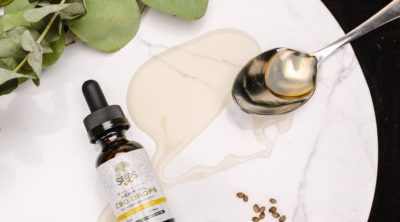
Slippery elm has been used in the treatment of various ailments in the Western culture. However, consultation with your healthcare professional is important before taking any herbal supplement. The following article provides information about the various side effects of this drug.
The scientific name of slippery elm is Ulmus rubra, and as the name suggests it belongs to the elm family. Some of the other common names of this herb are sweet elm, moose elm, and Indian elm. This herb is widely known for its therapeutic uses and has been used by Native Americans for centuries. The leaves, flowers, and the inner bark of this tree are used for their medicinal properties. Coarsely-powdered inner bark is used for poultices and finely-powdered bark is used to prepare tea. It is also available in the form of capsules, tablets, and lozenges.
Benefits
It has soothing properties that help in treating several ailments. It contains a substance called mucilage which when mixed with water, gives a gel-like consistency. This substance soothes the irritation of the stomach and intestines and cures sore throat.
- It helps in healing external wounds, boils, burns, psoriasis, and other such skin conditions.
- It is useful in the treatment of diarrhea, diverticulitis, constipation, gastroenteritis, and irritable bowel syndrome.
- It relieves the pain and inflammation in the stomach, kidneys, intestines, and the urinary tract.
- A mixture of the powder of the inner bark and milk or water is found to be very nutritious and provides comfort in cases of heartburn and indigestion.
- Applying this herb in the form of paste or powder not only treats wounds and other skin problems, but it also helps to keep the skin soft and healthy.
- Besides the healing properties, it is also highly nutritious and can be consumed in the form of porridge. It is a superfood for infants and children.
Side Effects
Even though the side effects of this herb are very few, one needs to take it according to the recommended dosage. Some people consider it safe for pregnant women and lactating mothers, but it should not be consumed without consulting your healthcare professional. The only significant side effect that it may cause is an allergic rash when used topically on the skin. In some cases, tingling or swelling in the mouth and throat, swelling of the face and hand, itching, difficulty in breathing, and tightness in the chest can be observed. Another possible side effect is that it might slow down the absorption process of other drugs or medicines.
Dosage
Drinking its tea 3-4 times a day is usually recommended to get the best results. Capsules can also be taken 3 to 4 times everyday for around 4-8 weeks. If it is to be used topically, then it should be mixed with boiling water or milk and applied when it cools off.
There hasn’t been much research on the safety and efficacy of this herb, therefore, it is important that one consults with an expert before taking this herbal remedy. There are no significant side effects, but it could interact with other drugs and cause certain reactions.
Disclaimer: This HolisticZine article is for informative purposes only, and should not be used as a replacement for expert medical advice.


